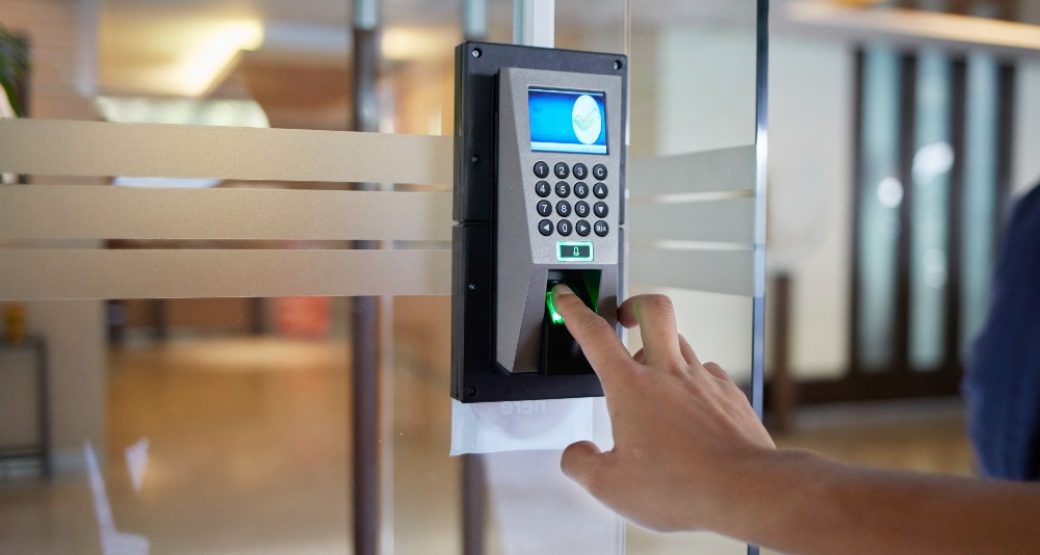Implementing a commercial access control system is critical to the safety of your staff, property, and customers. Commercial access control systems selectively permit/restrict and manage the ability to enter or exit particular areas in and around your commercial property. These areas can include rooms, buildings, or other areas that can only be accessed by authorized individuals.
Different types of commercial access control systems are available on the market, ranging in complexity and features. However, it’s important to find one that best suits your organizational requirements. A suitable commercial access control system can help organizations streamline access to authorized individuals and at the same time, restrict others.
Types of Commercial Access Control Systems
Mainly, you’ll find three types of access control systems on the market based on functionality. These include:
Standalone Network Access Control Systems
Standalone network access control systems are also called “traditional” access control systems. Smaller organizations with fewer employees typically used these commercial access control systems. The entire system is managed by a primary or central access control panel. This panel is connected to different cameras, electronic door locks, and readers, and with communication wiring and power.
IP Networked Access Control Systems
In IT networked access control systems, the main access control components are directly linked to a network via an Ethernet or wireless connection. These commercial access control systems are highly suitable for auditing, tracking, and user management purposes as they process information in real-time.
Zero-Touch Access Control Systems
Zero-touch access control systems are built to provide organizations with the convenience of contactless access control, especially in the current COVID-19 pandemic scenario. People no longer want to touch door handles and knobs, or push buttons. They prefer everything contactless. With zero-touch access control systems, physical contact is completely eliminated. Your visitors and staff can use hand-wave technology, face recognition, and their smartphones to enter your commercial property.
Commercial access control systems can also be classified based on access control permissions as:
Mandatory Access Control (MAC)
Mandatory access control is highly restrictive. In this system, the administrator assigns a tag to each user. The tag is based on the access control guidelines or policies of the organization. Any action taken by the permitted users is examined against the organization’s access control guidelines or policies to check if the action is permitted.
Mandatory access control systems are used by organizations that focus on confidentiality and thorough classification.
Role-Based Access Control (RBAC)
Role-based access control systems are the most widely used commercial access control systems. They make it extremely convenient to manage user permissions. With these control systems, permissions are granted to specific roles and then the roles are assigned to the allowed users. Access control in the case of role-based access control systems is typically based on job profiles and resource requirements.
Role-based access control systems are designed to permit users to access areas and buildings required for their jobs. Therefore, users do not have access to areas or information that do not come under the purview of their job profile. These systems can come in handy when working with large companies, third-party companies, and contractors.
Discretionary Access Control (DAC)
Discretionary access control involves minimum restrictions. In the case of this system, the administrator decides which people have access to which places. These commercial access control systems provide individuals with complete ownership over different areas in and around your commercial property.
How Commercial Access Control Systems Can Help
Different organizations and industries have different requirements for access control. However, here are some key ways in which almost all the commercial access control systems on the market can help your organization:
- Define security requirements to restrict access for different areas in and around your commercial property.
- Determine permission on the individual level.
- Allow user access based on days and timings.
- Monitor which users are accessing which areas in and around your commercial property.
- Trigger alarms in case of suspicious activity.
- Remotely manage access control using a smartphone or internet connection.
- Integrate with other components of your commercial security system, such as biometric access control and security cameras.
If you are unable to find a suitable commercial access control system for your organization, don’t get hassled. Fortunately, most access control systems can be customized to provide you with state-of-the-art access control functionalities.
At ProTech Security, we can help you set up customized commercial access control systems for your organization that can integrate the most advanced security technologies with innovative networking capabilities.
At ProTech Security, we have a strong history of experience, innovation, and customer service. The ProTech Security Advantage is more than 35 years of service in Northeast Ohio and a strong commitment to providing quality, cost-effective protection for homes, businesses, educational institutions, and government facilities. To see what ProTech Security can do for you, contact us today.



